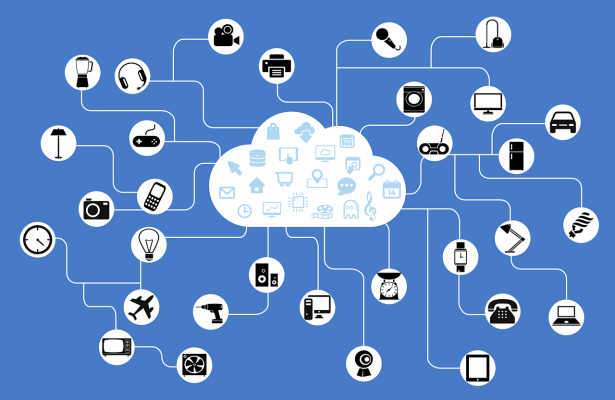
- January 17 2025
- SFI Solution Team
The Internet of Things (IoT) has significantly altered various industries, enhanced consumer interactions, and created new efficiencies across different sectors. Nevertheless, the journey toward the seamless integration of IoT devices is laden with challenges. This article examines the primary hurdles that businesses encounter during the integration of IoT devices and offers practical solutions to address these issues, thereby facilitating successful implementation and operation.
Comprehending IoT Device Integration
Integrating IoT devices entails connecting a variety of devices, systems, and platforms to facilitate smooth data exchange and communication. Whether it involves smart home technologies or industrial sensors, integration is crucial for ensuring that these devices function in harmony, providing real-time insights and automation.
Although the potential advantages of IoT integration are substantial, the process itself is intricate and necessitates meticulous planning and execution.
Key Challenges in IoT Device Integration
-
Interoperability Issues IoT devices are developed by various manufacturers, each using different protocols, standards, and technologies. Ensuring that devices from different vendors communicate effectively is one of the primary challenges.
-
Scalability Concerns As businesses grow, the number of connected devices increases. Scaling the IoT ecosystem while maintaining performance and reliability can be a daunting task.
-
Data Security and Privacy With millions of devices exchanging sensitive information, ensuring robust security and data privacy is critical. IoT systems are often targeted by cybercriminals due to vulnerabilities in device firmware and network protocols.
-
Integration with Legacy Systems Many organizations have legacy systems that were not designed to integrate with IoT technologies. Bridging the gap between old and new systems requires significant technical effort.
-
Data Management Challenges IoT devices generate vast amounts of data. Managing, storing, and analyzing this data efficiently while maintaining low latency can overwhelm traditional IT infrastructures.
-
Energy Efficiency and Battery Life Many IoT devices are battery-powered, and frequent battery replacements can disrupt operations. Ensuring energy-efficient devices that support long-term operations is a critical concern.
Effective Solutions for IoT Integration
-
Adopting Standardized Protocols To address interoperability issues, businesses should prioritize IoT devices that adhere to standardized communication protocols such as MQTT, CoAP, and Zigbee. Standards-based solutions reduce integration complexity and future-proof investments.
-
Leveraging Scalable Platforms Investing in scalable IoT platforms that support dynamic device management ensures smooth integration even as the network grows. Cloud-based IoT platforms like AWS IoT Core, Google Cloud IoT, and Microsoft Azure IoT offer scalability and robust management features.
-
Implementing Robust Security Measures • Use encryption protocols to protect data in transit. • Regularly update device firmware to patch vulnerabilities. • Employ multi-factor authentication (MFA) for device access. • Implement network segmentation to isolate IoT devices from critical systems.
-
Using Middleware for Legacy Integration Middleware acts as a bridge between legacy systems and modern IoT devices. Tools like API gateways and custom-built connectors can facilitate smooth communication between disparate systems.
-
Adopting Edge Computing Edge computing processes data closer to the source, reducing latency and bandwidth usage. This approach is especially beneficial for applications requiring real-time analytics and decision-making.
-
Energy-Saving Technologies Opt for devices with low-power communication protocols such as Bluetooth Low Energy (BLE) or LoRaWAN. Additionally, implement energy-harvesting technologies that leverage solar or kinetic energy to extend device lifespan.
Best Practices for Seamless IoT Integration
-
Conduct Comprehensive Planning Define clear objectives and assess the existing infrastructure before initiating integration projects. This includes identifying potential bottlenecks and compatibility issues.
-
Engage Cross-Functional Teams Collaboration between IT, operations, and business teams ensures that technical and strategic goals align.
-
Pilot Programs Start with small-scale pilot programs to test integration processes and identify potential challenges. Use insights from pilots to optimize full-scale implementation.
-
Continuous Monitoring and Maintenance Implement monitoring tools to track device performance and network health. Regular maintenance ensures optimal operation and minimizes downtime.
-
Partner with Experts Collaborate with IoT integration specialists or third-party vendors with a proven track record in implementing end-to-end solutions.
Future Trends in IoT Integration
The IoT landscape is rapidly evolving. Emerging trends such as 5G connectivity, AI-driven automation, and blockchain for secure device communication are shaping the future of IoT integration. Businesses that embrace these advancements can stay ahead in the competitive landscape.
Conclusion
The integration of IoT devices presents both significant challenges and substantial rewards. By effectively tackling issues related to interoperability, scalability, security, and data management through well-planned strategies and best practices, organizations can fully realize the advantages of IoT. As the IoT landscape continues to evolve, it is essential to remain updated on emerging technologies and trends to ensure sustained success.
Enhance Your IoT Strategy Today! Are you prepared to address the challenges of IoT integration and revolutionize your business operations? Collaborate with specialists who can assist you in the design, implementation, and management of your IoT solutions with efficiency.
Discover our services and elevate your IoT journey to new heights.
Previous Post